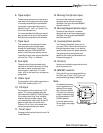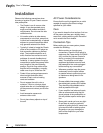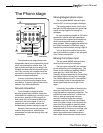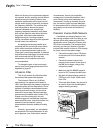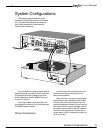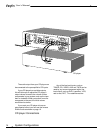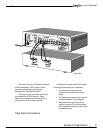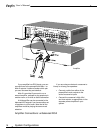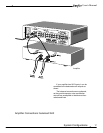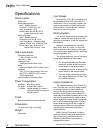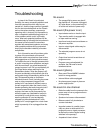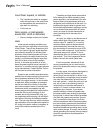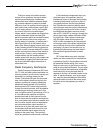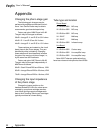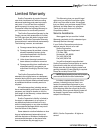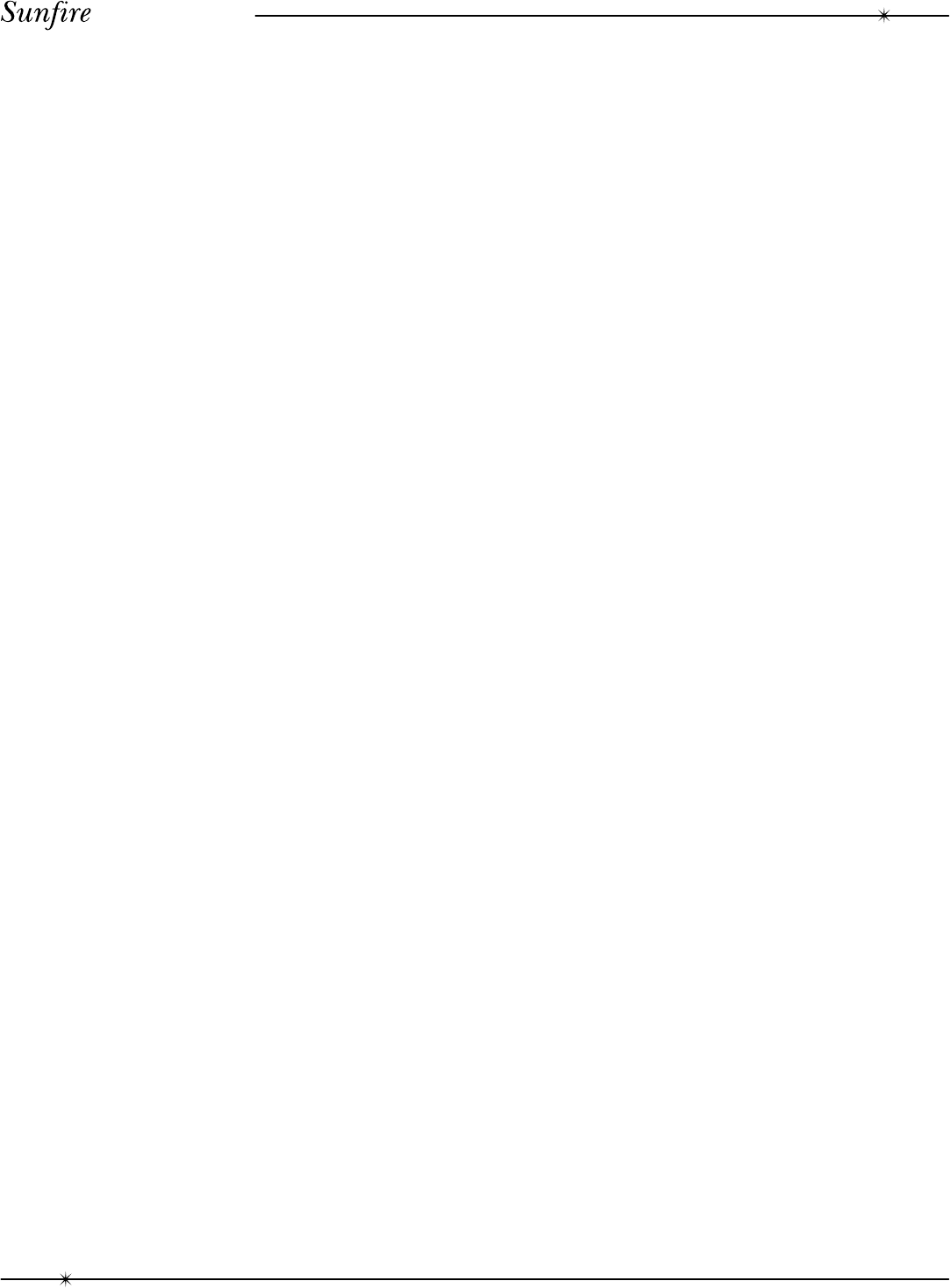
20
User's Manual
Loud howl, squeal, or whistle.
• The Tape Monitor switch is engaged
while microphones (in the same room
as the speakers) are connected to a
tape deck for recording.
• Put the cat out.
Solo voices, or instruments
sound thin, shrill or distorted.
• Phono cartridge is wired out of phase.
Hum
Under normal operating conditions you
hear very little hum originating in the circuitry
of the Classic. There is one exception to this
rule: If you have a high-gain power amplifier
and unusually sensitive (i.e. efficient) loud-
speakers, normal listening levels will involve
using abnormally low output levels from the
preamp, and those small signals might then
pick a bit of hum or hiss in the preamp’s
circuits. In this case the solution is to turn
down the power amplifier’s level controls if it
has them, or consider having its gain reduced
by the manufacturer. Contact Sunfire Techni-
cal Services for further information.
Except for the condition described above,
audible hum will nearly always be found to be
due to problems external to the Classic —
usually in the signal source, i.e. the turntable
or tape deck. Many turntables, for example,
have a hum field in the vicinity of the platter
due to the turntable’s motor or internal power
transformer which is acceptably low with
moving-magnet cartridges but audibly bother-
some with moving-coil cartridges. If your
turntable has a non-polarized AC plug, you
can experiment with reversing it to see which
orientation of the plug minimizes the audible
hum. The hum may also vary with the location
and orientation of the turntable with respect to
AC wiring in the walls, making it necessary to
move the turntable to another part of the
room.
Turntables and tape decks are sensitive
to the external hum fields created by many
power amplifiers, and sometimes to the hum
fields of other house appliances (such as a
refrigerator on the other side of the wall). It is
important that signal cables in general, and
the turntable signal leads in particular, should
not run close to and parallel with AC power
cords, nor close to a power transformer or
motor (including that in the base of the
turntable).
As a test, you might try and disconnect all
cables which come from outside the room,
such as cable TV, satellite TV, or roof top
antennas. Make sure that they are discon-
nected where they first enter the room, so
they are making no connection to your VCR,
TV, or any other component. If you find that
noise goes away when a cable TV line is
disconnected, then you will need a “ground-
loop isolator.” This is an inexpensive device
fitted in line with the coaxial cable feed.
If the hum persists, disconnect all the
source components one at a time from the
back of the preamplifier and you may identify
the problem.
In many cases, hum may be eliminated by
reversing the Classic’s (unpolarized) AC
power plug in the wall socket. In others it can
be minimized by connecting a heavy stranded
wire from the preamplifier’s ground post to a
true earth ground — which may turn out to be
any, all, or none of the following: the third
(round) hole in an electrical wall socket in
modern U.S. homes, a steam radiator, or a
cold water pipe. However, if your power
amplifier employs a three-wire power cord,
the stereo system may already be grounded
through that, in which case another grounded
wire from the preamp may create a “ground
loop” and make the hum worse. As for the
various components within the stereo system,
they are mutually grounded via the shields of
the signal cables and should not be intercon-
nected with additional grounding wires, for the
same reason (except, of course, the turntable;
whose grounding wire usually (but not always)
should be connected to the preamplifier’s
ground post).
Troubleshooting



